Protecting the River Wey in Alton
written by Glen Skelton and Jenny Griffiths
A group of 14 volunteers from Alton & Villages Local Action for Nature (part of Alton Climate Action & Network – ACAN) is working with Glen Skelton, the Wetland Landscapes Officer from Surrey Wildlife Trust, to protect and improve the health of the River Wey in Alton.
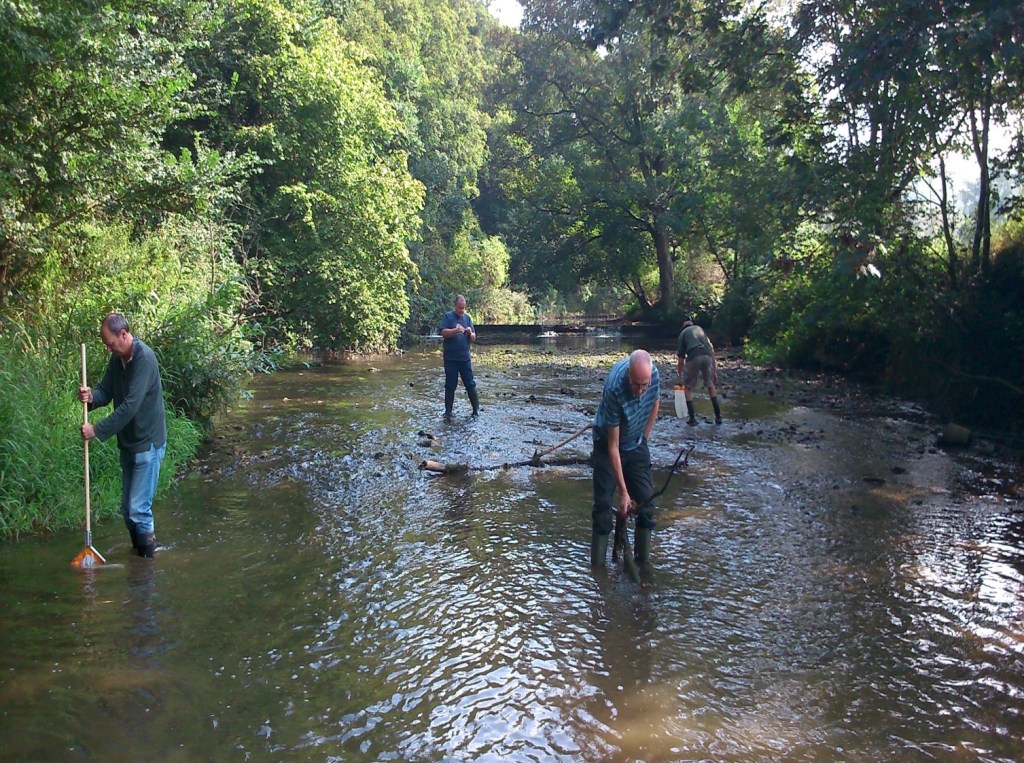
Glen has trained the volunteers in how to check for pollution incidents and get them investigated. Through Riverfly surveys, they will also track changes in the numbers of riverflies in the river, such as mayfly and caddisfly larvae and freshwater shrimp. They can then help to restore the river in those areas with low numbers of these insects, the areas that need the most urgent help.
Celebrating our river – a chalk stream
The River Wey has only two sources – we are fortunate that one is in Alton. The Wey runs from Alton all the way to the Thames at Weybridge. The North Wey between Alton and Farnham is the only part of the River Wey that is a chalk stream. Chalk streams are so important – there are only about 200 in the world, and 85% of them are in the southern half of England. They are one of Earth’s rarest habitats. Chalk streams are full of gin-clear alkaline-rich water which comes from springs in the chalk aquifer – water stored underground, with a stable temperature all year round. The river bed is gravel or chalk with shallow banks and an abundance of aquatic plants.
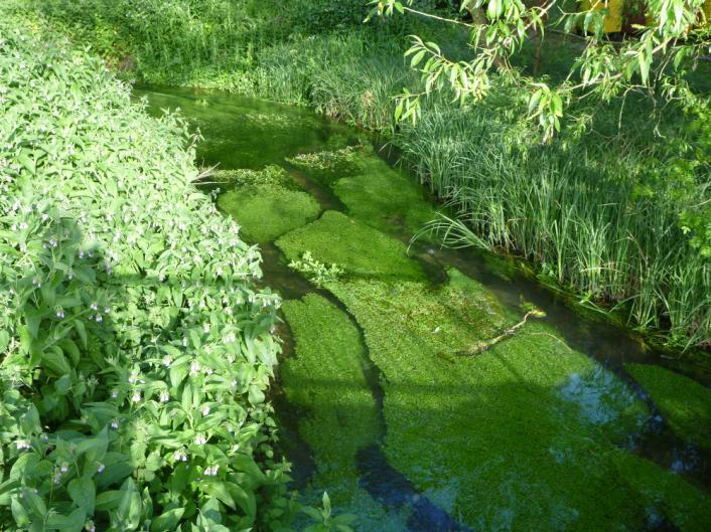
Their headwaters dry up in warmer months (known as a “winterbourne”).
Pressures and problems
Unfortunately all is not well with Alton’s river. Alton is a built-up area and this causes pollution of the river from sewage, road run-off and even dishwashers connected up to the wrong drain. Pollutants bring unwanted nutrients into the river causing algal blooms, which starve the river of oxygen and kill fish and insect life.
On the outskirts of the town, soil run-off from fields gets into the river after heavy rain and flooding, often travelling down roads. The sediment covers the river bed gravels, smothering aquatic plants and invertebrates. Sediment also transports pesticides and fertilizers again causing suffocating algal blooms. The headwater streams that feed into the main river, such as the Caker stream, are important spawning sites for migratory fish such as the brown trout. The eggs need lots of oxygen, but get smothered by the sediment. The fields at the top of Brick Kiln Lane have been releasing large amounts of sediment into the river during this winter’s rains turning it brown and smothering the gravel.
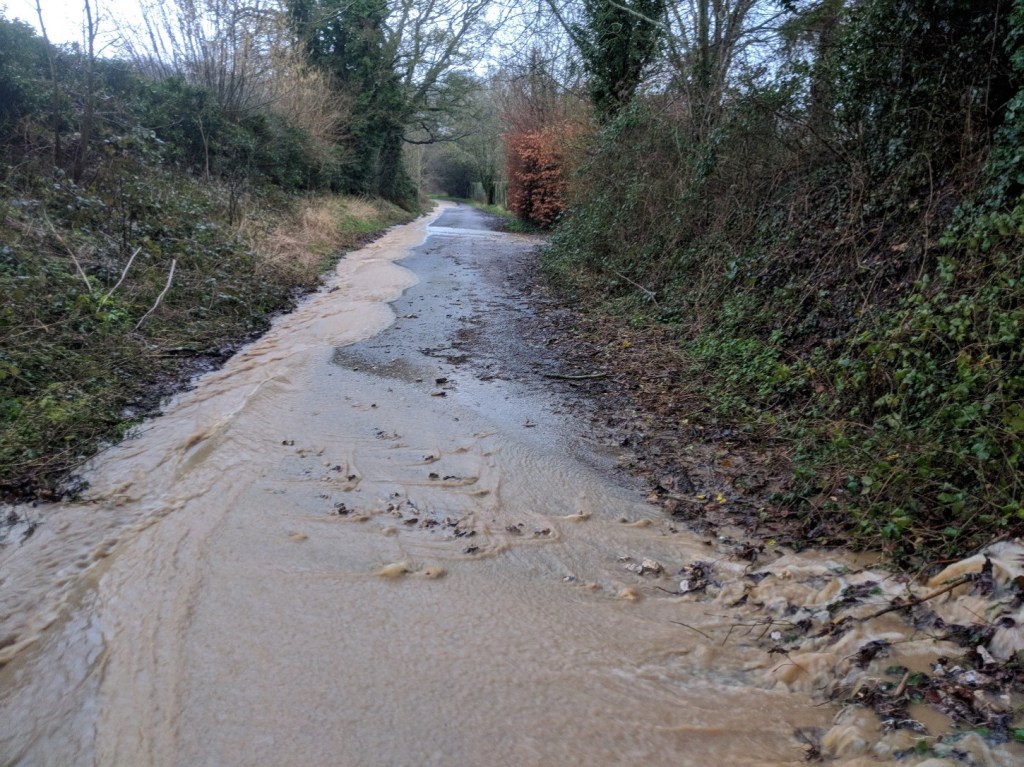
The impact of this could clearly be seen at Flood Meadows

We need to work with landowners to keep soil on their fields, encouraging the use of herb- rich field edges to trap soil run off or planting crops which hold the soil together in the winter months.
Kings Pond
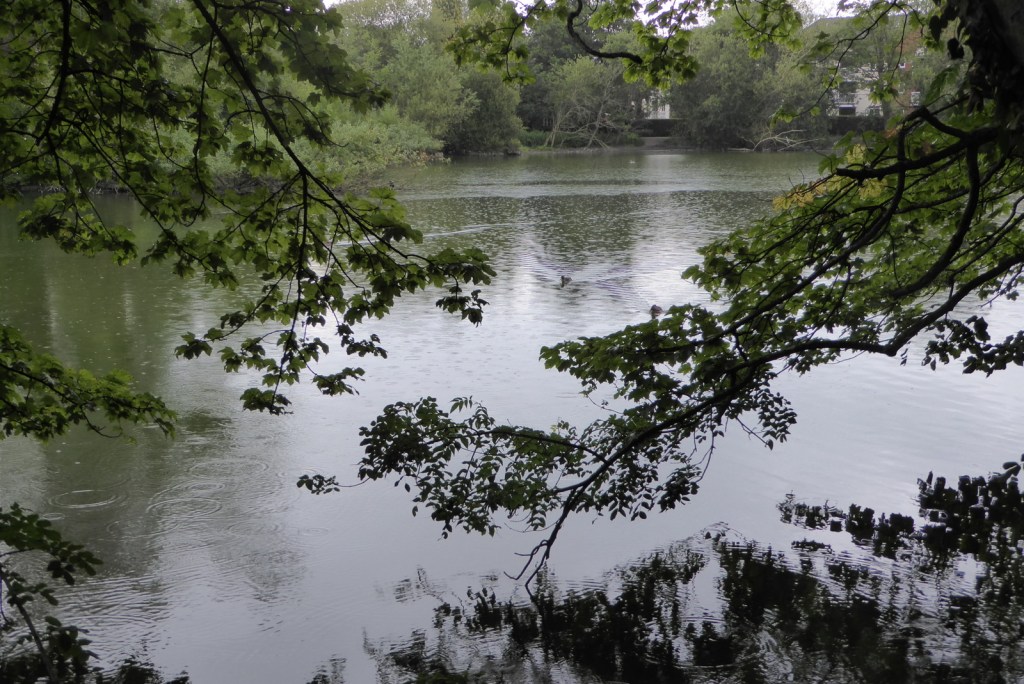
Kings Pond collects all of the sediment coming downstream and is slowly filling up. Also the large amount of food thrown in to feed the water fowl creates a nutrient-rich soup which damages the river. This has been picked up in Riverfly surveys which have shown low numbers of invertebrates in the river downstream of the pond. In an ideal world we would find a way to bypass the river around Kings Pond, allowing plant and invertebrate species downstream to bounce back.
Climate Change
Headwater streams are the first to be affected by climate change. As our world gets warmer, springs are drying up earlier each year. Ancient populations of brown trout

that have been isolated in headwaters for millennia are starting to get into trouble as flows decrease and waters warm up. These trout are so important for helping to renew trout populations reduced by pollution downstream.
Re-naturalising the river
The river in Alton has been straightened in many places. The uniform channels lack variation in flows and deeper water crucial to support a range of different species, and they offer little refuge for fish species to escape predators. Overwide channels also drop sediment during low flows. But we can help. Creating a more sinuous channel through the use of berms (barriers) can help to speed up flows, cleaning the gravels and helping aquatic plants to re-establish, supporting fish and invertebrate life. The Wildlife Trust and volunteers have already re- naturalised the river in this way at both the Lamports and Flood Meadows. AVLAN is open to all and welcomes new volunteers at any time. Get in touch through the ACAN website www.altonclimatenetwork.org.uk or email altonclimatenetwork@gmail.com , or contact us through AVLAN’s Facebook page.
Posted here on behalf of the Riverfly partnership.



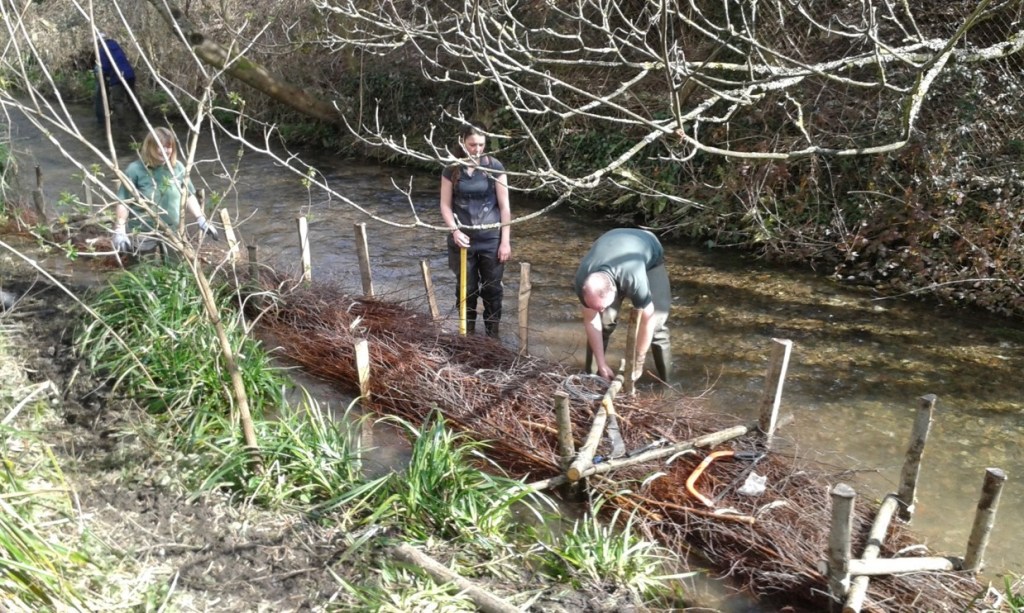
James – good to read this and learn. Do we know why there is so much water flowing now when it has been dry for so long. Is it down to the wet early spring or less draw off during the lockdown? I didn’t know how rare chalk streams are!
John
LikeLike
(Sorry for slow reply, John – I had to work out how to cancel the WordPress setting which closed comments automatically after two weeks – fixed now!)
According to the current Thames Area situation report groundwater levels remain high after the wet winter, Here is an extract:
“In summary:
· Rainfall during March was normal across Thames area.
· The month ended with a dry period which left soils drier than expected going into the summer period.
· As a result of the wettest winter period since 2014 recharging groundwater, the majority of groundwater indicator sites were classed as above normal or higher for the time of year.
· Because of this, and the impact of Storm Jorge at the end of February, river flows were above normal or higher for the time of year at the majority of indicator sites.”
LikeLike
John – James has done a brilliant job on this blog. Glen Skelton was really pleased with it and asked his comms people at the Wildlife Trust to promote it.
The Wey between Alton and Farnham is a “winterbourne”. As it is fed by the water coming up from the chalk aquifers via the springs all around the town (e.g. King’s Pond, Flood Meadows), when the water table drops in the summer/autumn the springs will stop flowing. Then – as you rightly say – the water table rises due to rainfall in the winter and indeed this year huge amounts of rain in March. The water will probably continue to flow strongly for a month or two yet, despite the dry weather now. There is always a time lag.
We are very, very fortunate to have a chalk stream and we need to protect it. Chris C. has just sent me pics of the mess the developers are making at the bottom of Brick Kiln Lane where there is a chalk stream. When we are able, we must go and talk to the developers about their plans for preventing run-off, which does so much damage to the river water quality.
I don’t know about you, but I have used up the water butt and am using tap water to water the garden – already!!
Best wishes
Jenny
LikeLiked by 1 person
Thanks for the explanation Jenny.
Before the lock down there was a time when the water became brown soup suddenly – due to Redrow I believe. When works starts again perhaps we need weekly photos to alert the builder to any lapses. In the article it mentions field run off as a potential problem. It could happen from Brick Kiln Lane although as a dog walker up there I think the problem is much less than the builder over the fence.
John
LikeLike